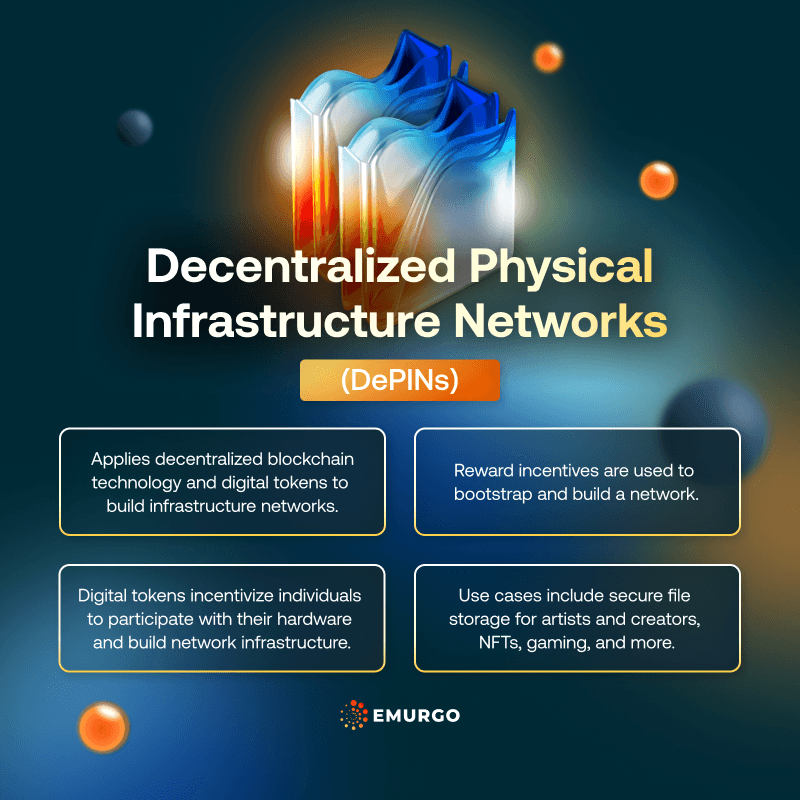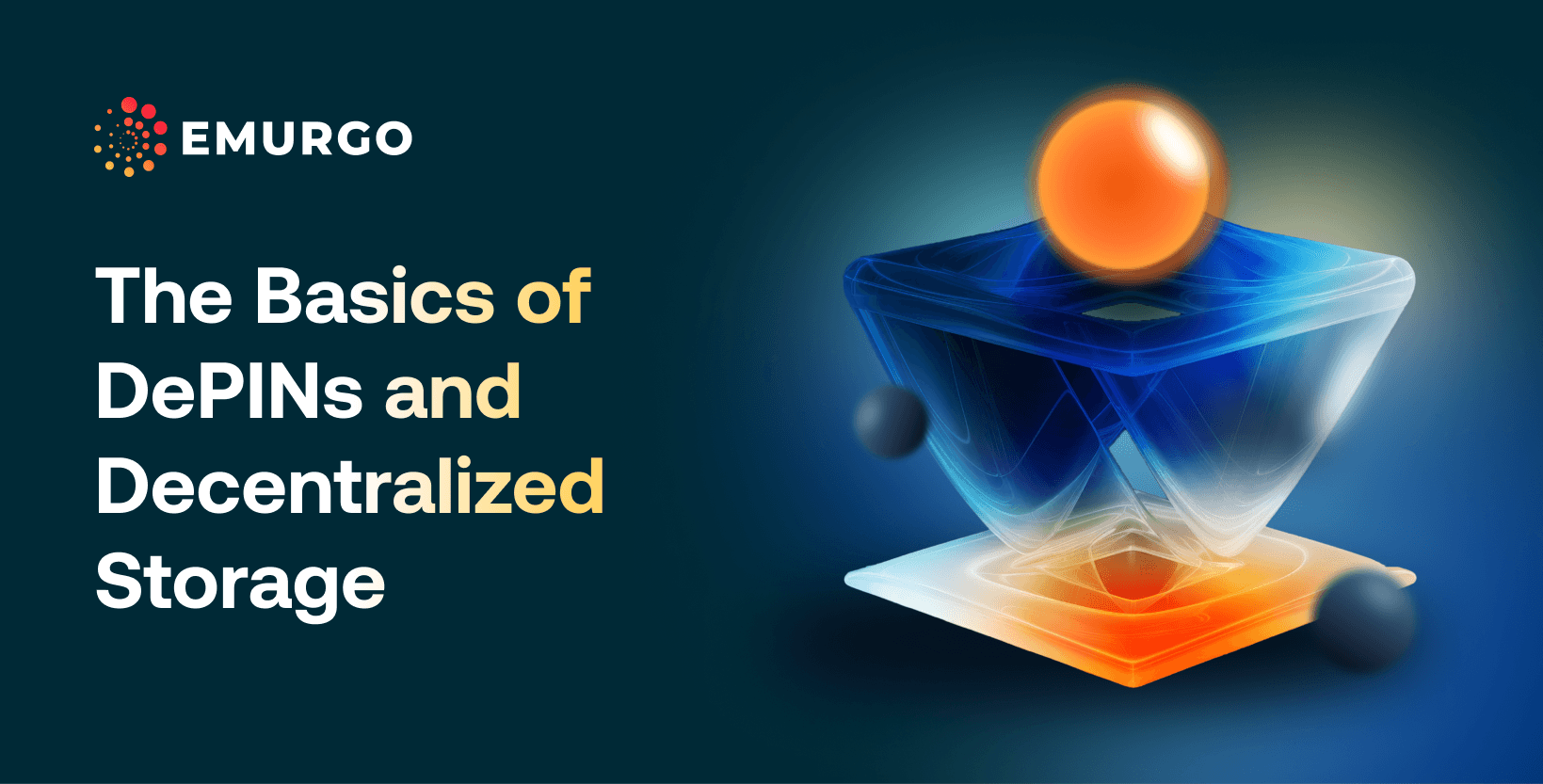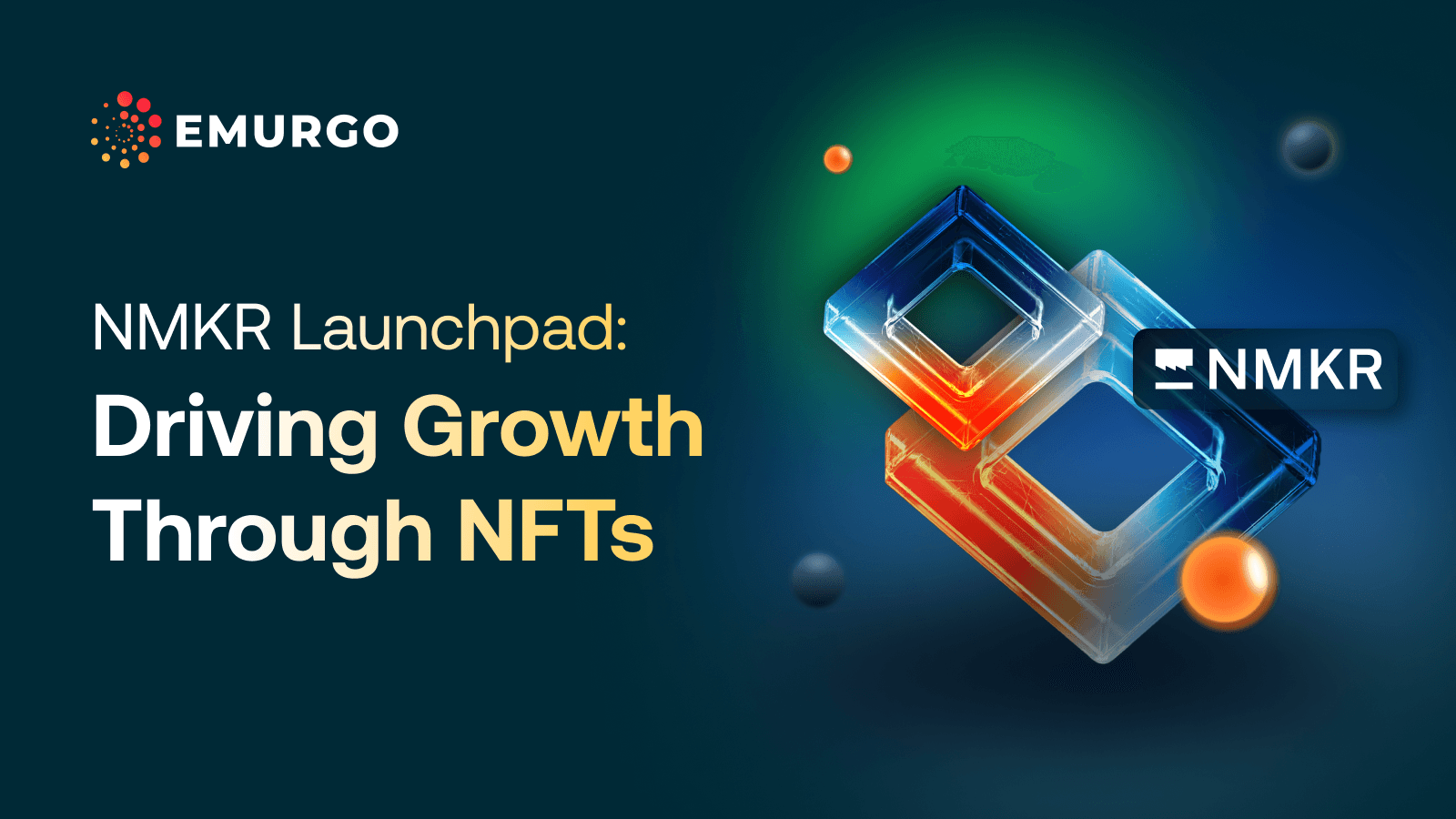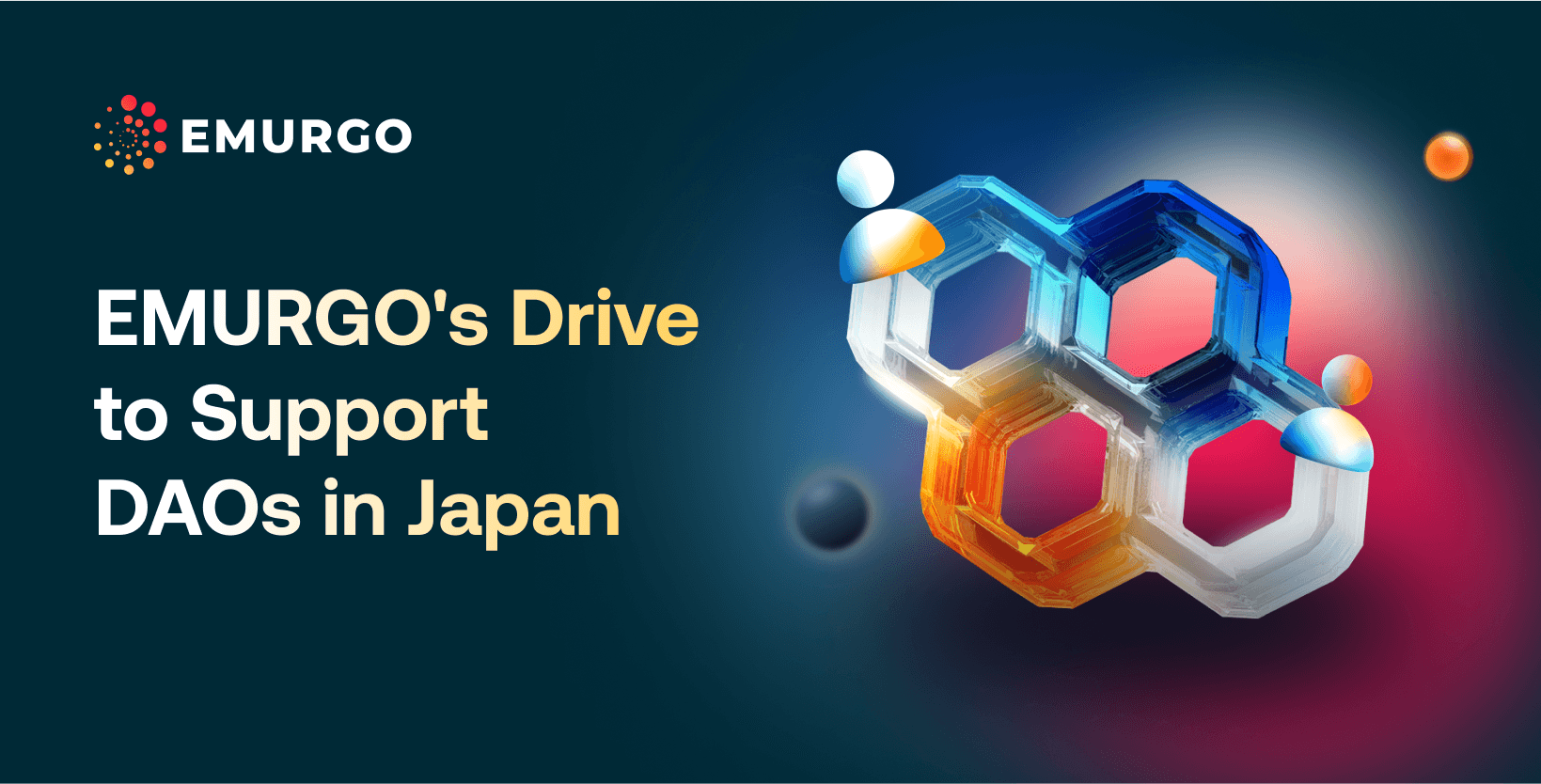DePINs (decentralized physical infrastructure networks) are a relatively new field of blockchain technology that is increasing in awareness.
While much attention has been given to real-world asset tokenization, NFTs, and DeFi, the benefits of DePINs also present more real use cases for blockchain.
These days, everyday consumer items utilize a connective network infrastructure that is usually provided and administered by centralized parties. These include cellphone networks, the internet, supply chains, water and electricity, and more. Some of these infrastructure networks undoubtedly benefit from having a centralized actor to make for more efficient processes in distribution.
However, some networks could benefit from having a more decentralized structure for reasons related to security, accountability, transparency, and more.
This is where DePINs can offer a potential solution.
Let’s dig deeper into DePINs and their different types.
Blockchain technology has been around for more than a decade and is being looked at or used for a wide range of potential uses in finance, supply chains, data management, and more. Decentralized blockchain technology, in particular, provides a digital way to transparently record and store vital information in a trustless manner without a need for a centralized administrator through the distribution and upkeep of this information on a network of nodes (servers) that are incentivized to maintain the network in the form of a cryptocurrency or digital token.
Related reading:
- 5 user applications you can build with blockchain technology
- What is blockchain decentralization and why does it matter?
- Why businesses should start to learn about blockchain
This unique property has the potential to provide benefits for many businesses and industries where data keeping can be securely and reliably automated with accountability and transparency. Centralized actors and certain stakeholders would need to be less relied upon by others to faithfully carry out their responsibilities.
This brings us to DePINs which applies the beneficial properties of decentralized blockchain technology and digital tokens to infrastructure networks.

Instead of having a centralized party pay upfront and control a network, a group can use reward incentives to bootstrap or build a new type of network or distribution channel.
Individual users would be incentivized in the form of digital tokens to participate in DePINs by lending their hardware to increase overall network connectivity and expand coverage. Those who provide access where the network has not yet developed can get more token rewards than those located in areas with network coverage. Tokens can be used for other transactions as well.
The result would be a self-organizing infrastructure network that incentivizes expansion via user participation, instead of a large upfront investment by a centralized entity. DePINs offer a potential new model that merges network infrastructure construction and maintenance with digital blockchain technology.
DePINs can be extended to many types of network infrastructure.
Generally, it can divided into two camps:
- Physical networks
- Digital networks
Both types of networks require resources to be built. This is where the incentivization mechanism is used.
-
Physical networks
These require hardware to multiply and provide coverage to an industry, geographical area, or economic activity. In a traditional model, these networks would be deployed by a company paying the investment upfront keeping all the profits for itself, and also trying to gather as much user data as possible.
In a DePIN model, the hardware deployments could be tracked by a digital blockchain.
Once a new device connects to the network, the user who placed it begins receiving a reward from the network itself. Users are rewarded by deploying hardware in areas with low coverage, naturally extending the reach of the service.
One example is IoT devices.
A blockchain-based project using DePINs can reward users who place nodes that allow the network to track shipment across regions. This allows the company to track its shipments faster and cheaper. The users get more rewards by deploying sensors along the different shipment routes.
In time, the network would extend its coverage until it covers all the shipment routes that companies use to move cargo. The network charges the companies for the service and distributes the rewards to everyone maintaining the nodes.
If new routes were to open, the users could react by deploying more sensors and getting higher early rewards. This creates a network that can potentially self-expand and quickly reshape to cover new areas of economic activity.
-
Digital networks
Another type of DePIN network is in digital infrastructure.
The idea is to have a network able to provide a service delivered via the Internet. This is where computational resources are shared to a larger whole.
One example is decentralized storage networks such as AIOZ Network.
In decentralized storage, users delegate a portion of their hard drives to these networks which in turn, rent the space to other users looking to store information.
The network can encrypt the stored data and divide it into smaller chunks. No one computer has a copy of the data of the users, so theoretically, there is more privacy in decentralized storage than when using cloud solutions.
These decentralized storage networks use digital token incentives to attract more delegators. Those looking to buy storage space need to pay with that network’s token, creating a circular economy.



